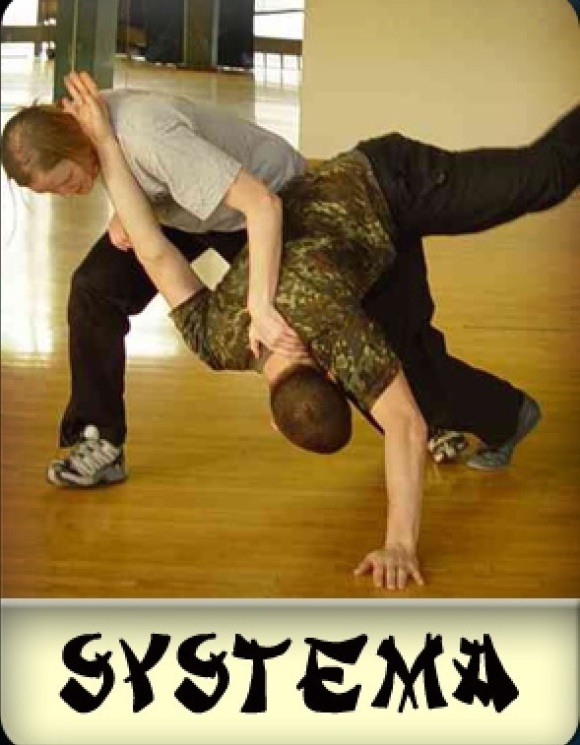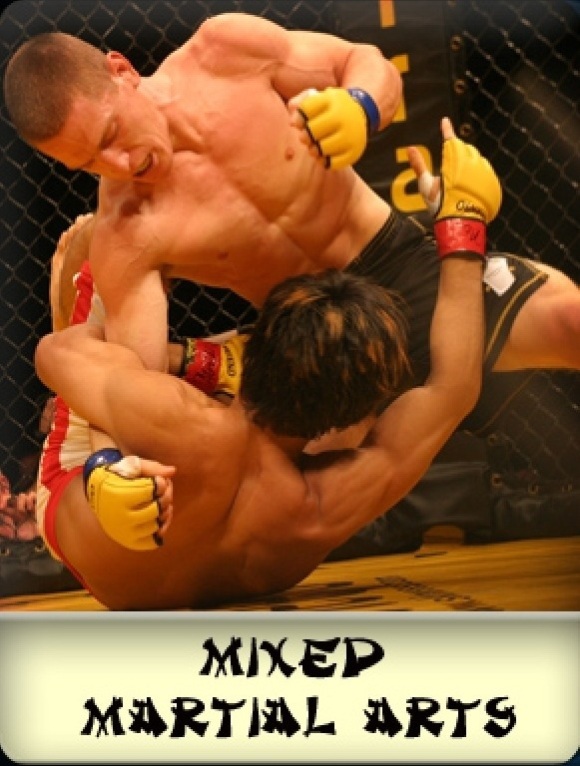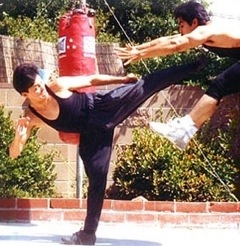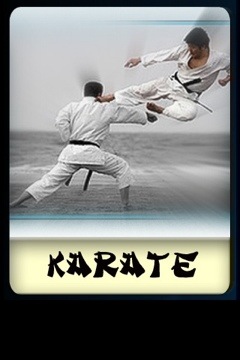Systema “The System” is a Russian martial art. It is designed to be highly adaptive and practical, training using drills and sparring instead of set kata. It focuses mainly on controlling the six body levers (elbows, neck, knees, waist, ankles, and shoulders) through pressure point application, striking and weapon applications. Systema is often advertised as being a martial art employed by some Russian Spetsnaz units.
Gorillaz Tips
Fitness, Nutrition, Martial Arts and General Health
Category Archives: Background
MIXED MARTIAL ARTS
MIXED MARTIAL ARTS
Mixed martial arts (MMA) is a full contact combat sport that allows a wide variety of fighting techniques, from a mixture of martial arts traditions and non-traditions, to be used in competitions. The rules allow the use of striking and grappling techniques, both while standing and on the ground. Such competitions allow martial artists of different backgrounds to compete.
The roots of mixed martial arts can be traced back to various mixed style contests that took place throughout Europe, Japan and the Pacific Rim during the early 1900s. Modern MMA competition emerged in 1993 with the founding of the Ultimate Fighting Championships, although professional MMA events had been held in Japan by Shooto starting back in 1989. Originally organized with the intention of finding the most effective martial arts for real unarmed combat situations, competitors were pitted against one another with minimal rules for safety. Later promoters adopted many additional rules aimed at increasing safety for competitors and to promote mainstream acceptance of the sport.
The name mixed martial arts was coined by Rick Blume, president and CEO of Battlecade, in 1995. Following these changes, the sport has seen increased popularity with pay per view reach rivaling boxing and professional wrestling.
Jeet Kune Do
Jeet Kune Do “Way of the Intercepting Fist,” also “Jeet Kun Do”,“JKD,” or “Jeet Kune Do”) is a hybrid fighting system and life philosophy founded by Bruce Lee in 1967 with direct, non classical, and straight forward movements. Jeet Kune Do is primarily an open hand system. The system works on the use of different ‘tools’ for different situations. These situations are broken down into ranges (Kicking, Punching, Trapping, & Grappling), with techniques flowing smoothly between them. Also, it is referred to as a “style without style”. Unlike more traditional martial arts, Jeet Kune Do is not fixed or patterned, and is a philosophy with guiding thoughts.
In 2004, the Bruce Lee Foundation decided to use the name Jun Fan Jeet Kune Do to refer to the martial arts system that Lee founded. “Jun Fan” was Lee’s Chinese given name, so the literal translation is “Bruce Lee’s Way of the Intercepting Fist.”
Karate
Karate is a martial art developed in the Ryukyu Islands (Okinawa) from indigenous fighting methods called te (literally: “hand”?) and Chinese kenpo. Karate is a striking art using punching, kicking, knee and elbow strikes, and open-handed techniques such as knife-hands (karate chop). Grappling, locks, restraints, throws, and vital point strikes are taught in some styles. A karate practitioner is called a karateka.
Karate developed in the Ryukyu Kingdom prior to its 19th century annexation by Japan. It was brought to the Japanese mainland in the early 20th century during a time of cultural exchanges between the Japanese and the Ryukyuans. In 1922 the Japanese Ministry of Education invited Gichin Funakoshi to Tokyo to give a karate demonstration. Keio University became the first Japanese university to open a dojo (training hall); by 1932, all Japanese universities had a dojo. In this era of escalating Japanese militarism, the name was changed from (“Chinese hand”) to (“empty hand”) “both of which are pronounced karate” to indicate that the Japanese wished to develop the combat form in Japanese style. After the second world war, Okinawa became an important United States military site and karate became popular among servicemen stationed there.
The martial arts movies of the 1960s and 1970s served to greatly increase its popularity and the word karate began to be used in a generic way to refer to all striking-based Oriental martial arts. Karate schools began appearing across the world, catering to those with casual interest as well as those seeking a deeper study of the art.
Shigeru Egami, Chief Instructor of Shotokan Dojo, opined “that the majority of followers of karate in overseas countries pursue karate only for its fighting techniques…Movies and television…depict karate as a mysterious way of fighting capable of causing death or injury with a single blow…the mass media present a pseudo art far from the real thing.” Shoshin Nagamine said “Karate may be considered as the conflict within oneself or as a life-long marathon which can be won only through self-discipline, hard training and one’s own creative efforts.”
For many practitioners, karate is a deeply philosophical practice. Karate-do teaches ethical principles and can have spiritual significance to its adherents. Gichin Funakoshi (“Father of Modern Karate”) titled his autobiography Karate-Do: My Way of Life in recognition of the transforming nature of karate study. Today karate is practiced for self-perfection, for cultural reasons, for self-defense and as a sport. In 2005, in the 117th IOC (International Olympic Committee) voting, karate did not receive the necessary two thirds majority vote to become an Olympic sport. Web Japan (sponsored by the Japanese Ministry of Foreign Affairs) claims there are 23 million karate practitioners worldwide.
Tae Kwon Do
TaeKwonDo is a Korean martial art and the national sport of South Korea. In Korean, tae means “to strike or break with foot”; kwon means “to strike or break with fist”; and do means “way,” “method,” or “art.” Thus, taekwondo may be loosely translated as “the way of the foot and fist” or “the way of kicking and punching.”
Taekwondo is the world’s most popular martial art in terms of the number of practitioners. Its popularity has resulted in the varied development of the martial art into several domains: as with many other arts, it combines combat techniques, self-defense, sport, exercise, meditation and philosophy. Taekwondo is also used by the South Korean military as part of its training. Gyeorugi, a type of sparring, has been an Olympic event since 2000.
Formally, there are two main styles of taekwondo. One comes from the Kukkiwon, the source of the sparring system sihap gyeorugi which is now an event at the summer Olympic Games and which is governed by the World Taekwondo Federation (WTF). The other comes from the International Taekwon-Do Federation (ITF).
Separate from the various taekwondo organizations, there have been two general branches of taekwondo development: traditional and sport. The term “traditional taekwondo” typically refers to the martial art as it was established in the 1950s and 1960s in the South Korean military forces; in particular, the names and symbolism of the traditional patterns often refer to elements of Korean history. Sport taekwondo has evolved in the decades since then and has a somewhat different focus, especially in terms of its emphasis on speed and competition (as in Olympic sparring), whereas traditional taekwondo tends to emphasize power and self-defense. The two are not mutually exclusive, and the distinctions between them are often blurred.
Although there are doctrinal and technical differences between the two main styles and among the various organizations, the art in general emphasizes kicks thrown from a mobile stance, employing the leg’s greater reach and power (compared to the arm). The greatest difference between various styles, or at least the most obvious, is generally accepted to be the differing styles and rules of sport and competition. Taekwondo training generally includes a system of blocks, kicks, punches, and open-handed strikes and may also include various take-downs or sweeps, throws, and joint locks. Some taekwondo instructors also incorporate the use of pressure points, known as jiapsul, as well as grabbing self-defense techniques borrowed from other martial arts, such as hapkido and judo.



